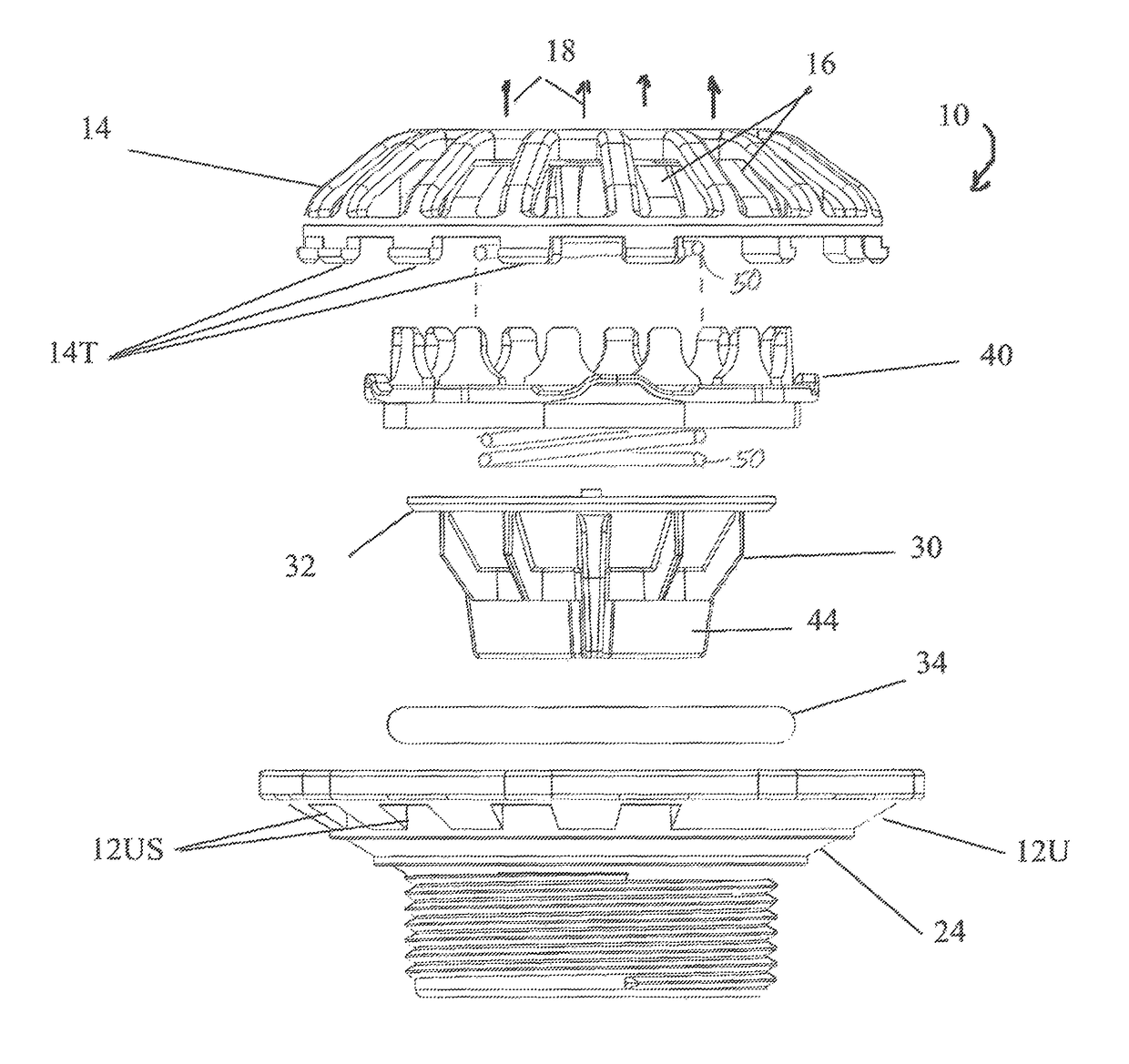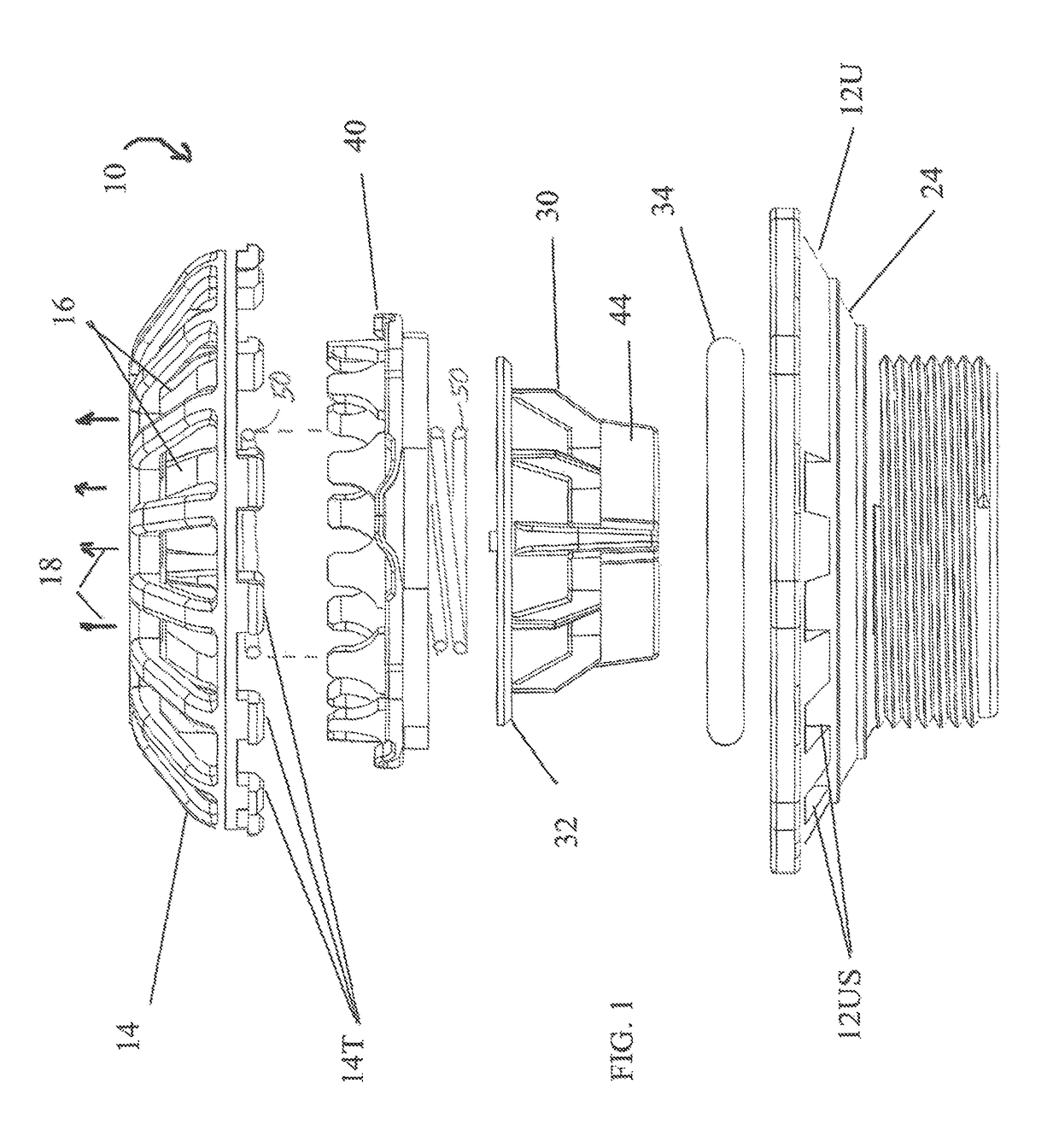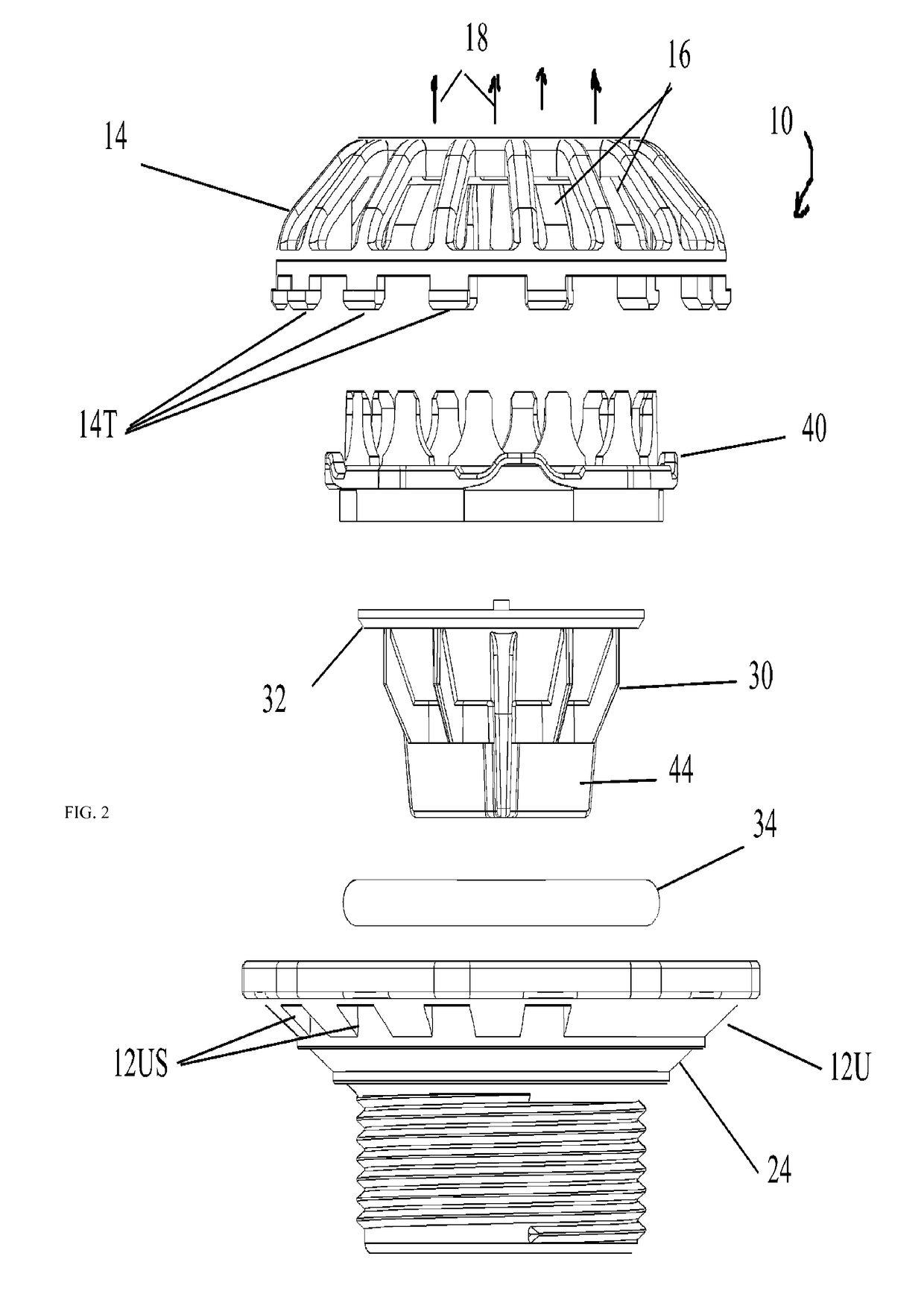Relief valve
a relief valve and valve body technology, applied in the field of relief valves, can solve the problems of excessive oscillation of relief valves, the seat pressure of many prior art relief valves is substantially lower than the cracking pressure, etc., and achieves the effects of reducing cross-sectional, minimizing possible oscillations, and increasing flow ra
- Summary
- Abstract
- Description
- Claims
- Application Information
AI Technical Summary
Benefits of technology
Problems solved by technology
Method used
Image
Examples
Embodiment Construction
[0028]The following description is of the best mode presently contemplated for carrying out the invention. This description is not to be taken in a limiting sense, but is made merely for the purpose of describing one or more preferred embodiments of the invention. The scope of the invention should be determined with reference to the claims.
[0029]The present invention is an improvement of U.S. Pat. Nos. 7,469,713 and 7,096,884, the disclosures of which are each hereby incorporated by reference herein. Similar to these earlier embodiments in these patents and using similar reference numerals where appropriate as shown in FIGS. 1-4, the relief valve 10 of the invention comprises an upper body 12U and a lower body (not shown) threadably coupled together by complementary respective threads (see FIG. 12). A cap 14 is coupled to the upper body 12U. Cap 14 comprises a plurality of flow openings 16 about its periphery allowing internal fluid such as air to flow through the relief valve 10 to...
PUM
 Login to View More
Login to View More Abstract
Description
Claims
Application Information
 Login to View More
Login to View More - R&D
- Intellectual Property
- Life Sciences
- Materials
- Tech Scout
- Unparalleled Data Quality
- Higher Quality Content
- 60% Fewer Hallucinations
Browse by: Latest US Patents, China's latest patents, Technical Efficacy Thesaurus, Application Domain, Technology Topic, Popular Technical Reports.
© 2025 PatSnap. All rights reserved.Legal|Privacy policy|Modern Slavery Act Transparency Statement|Sitemap|About US| Contact US: help@patsnap.com



